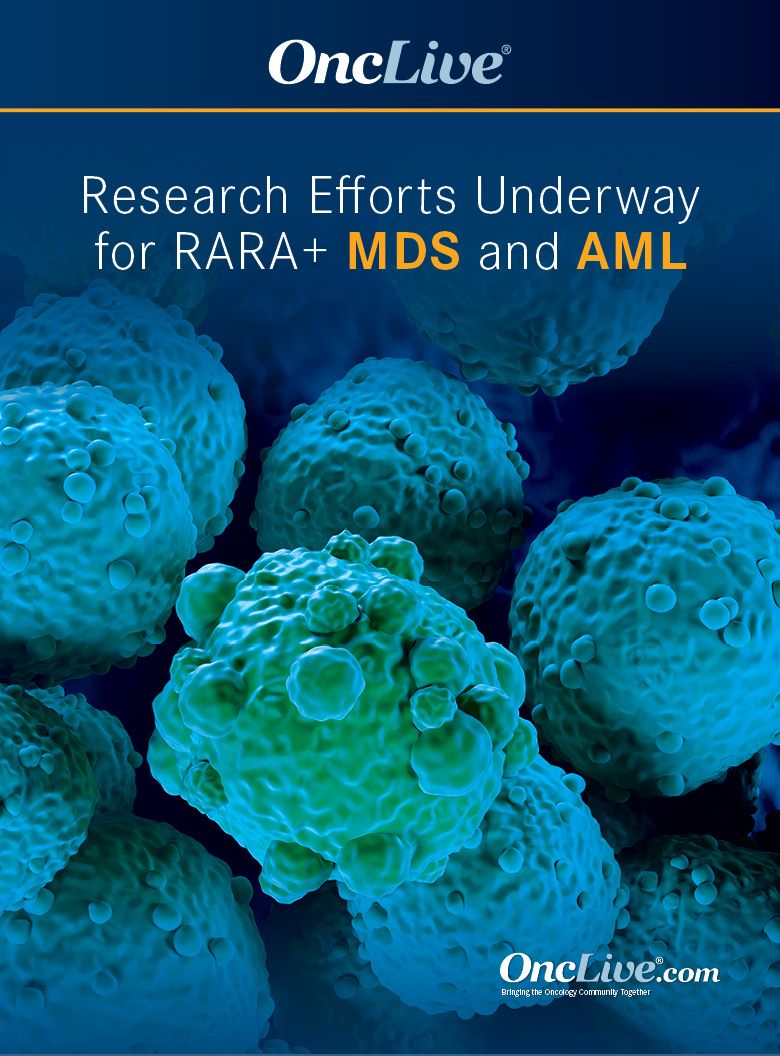Publication
Video
Treatment Options for Patients with Newly Diagnosed Acute Myeloid Leukemia (AML)
Author(s):
A review of treatment options for patients with newly diagnosed acute myeloid leukemia and differences between patients who are fit vs unfit for chemotherapy.
EP: 1.Treatment Options for Patients with Newly Diagnosed Acute Myeloid Leukemia (AML)
EP: 2.Biomarker Testing in AML
EP: 3.Potential Role of Tamibarotene in AML
EP: 4.Venetoclax and HMA Resistance in Patients with AML
EP: 5.Review of the SELECT-AML-1 Trial and the Future of Newly Diagnosed AML
Daniel Pollyea, MD, MS: Hi everybody. I’m Dan Pollyea from the University of Colorado, Division of Hematology, where I direct the clinical leukemia program. We are talking today about tamibarotene in patients with newly diagnosed AML [acute myeloid leukemia].
A patient with newly diagnosed AML now has a variety of different treatment options. If a patient is a suitable candidate for intensive induction chemotherapy, then that is what they receive. That can be the standard 7-plus-3 regimen, with in some cases gemtuzumab, or in other cases, 7-plus-3 with the FLT3 inhibitor midostaurin. Other patients receive the 7-plus-3 regimen alone. Patients with this disease, however, are frequently older and poor candidates for intensive induction chemotherapy because of their age or comorbidities. For them, the standard of care is usually a venetoclax-based regimen, usually venetoclax plus azacitidine. There are a few other caveats to this, but those are the main treatment approaches for a patient with newly diagnosed AML.
Patients are assessed at diagnosis with AML for their suitability for intensive chemotherapy; that’s the way we’ve regarded newly diagnosed patients for a very long time. In the past, if they were a candidate for intensive induction chemotherapy, they got that treatment, and if they weren’t, there weren’t any really good options for that patient. Things have really changed, but not so much with the landscape for the intensive chemotherapy; the backbone of that treatment has stayed safe for a very long time. Things have changed more in the treatment options we have for a so-called unfit patient. But fitness comes down to subjective types of calls. This includes how a patient looks, their performance status, and sometimes more objective things like organ function. But it’s definitely not always a scientific decision as to whether a patient is fit or unfit for intensive chemotherapy.
For a newly diagnosed unfit patient, I think that in the United States, the main treatment approach for these patients is venetoclax plus azacitidine. That therapy was superior to azacitidine alone, and is the new standard of care. We have other options, including the Hedgehog inhibitor glasdegib with low-dose cytarabine, and if a patient has an IDH1 mutation, we also have the option of using ivosidenib. There are a few other options, but I would say they are not preferred options compared to venetoclax plus usually azacitidine.
Transcript edited for clarity.










